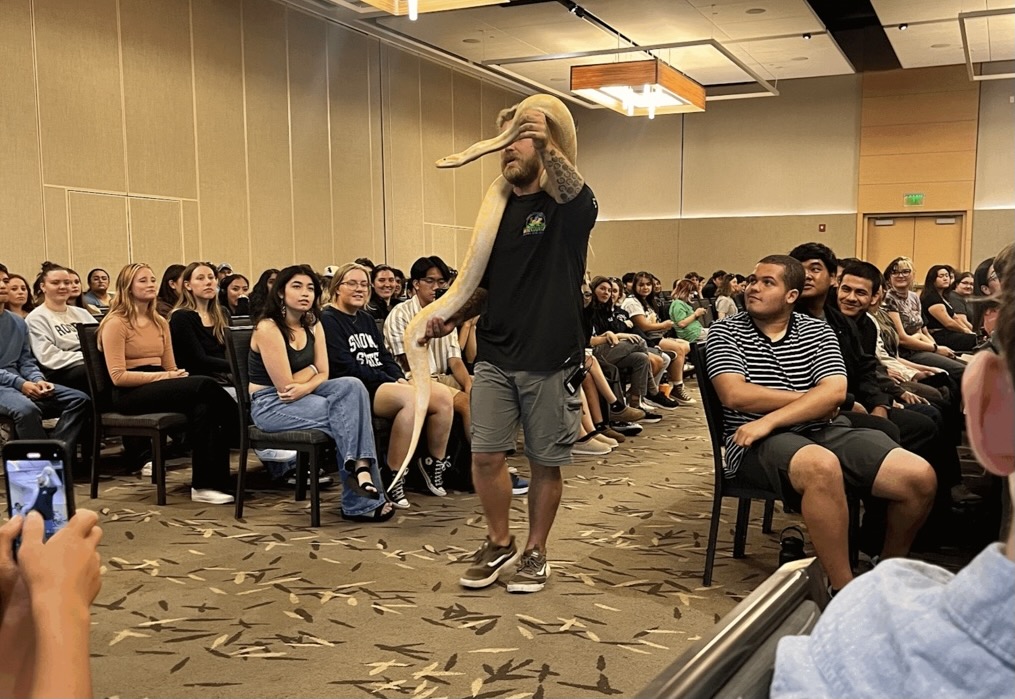“Send nudes” is a text message many girls have received at least once. In this generation, “sexting,” which is the sending of sexually explicit material through mobile phones, is considered just another way of flirting with someone. Especially in the college atmosphere, where binge drinking and casual sex are prominent, “sexting” is about as common as seeing a white girl with a Starbucks cup.
College-age students who are participating in “sexting” is not so shocking, but the real concern is when underage teens are involved in the sending or receiving of sexually explicit messages. According to chicksincrisis.org, about a quarter of all high school-age students participate in the sending or receiving of nude photos. Even more alarming, about 30 percent of the pictures sent are to someone they only know through the Internet. There is no denying the positive effects technology plays in people’s lives. However, the question at hand is when is too much, “too” much?
Walking through a middle school, or even an elementary school, one would see a cell phone in the hand of almost every kid. These days, almost every single phone is equipped with a camera, texting and Internet access. This easy access allows children to view whatever they would like, whenever they would like.
When social media first gained major popularity, there was widespread concern for teens and preteens sharing too much on their pages. “Too much” back when I was in middle school, and MySpace was the social media of choice, included sharing an address, a phone number or even a last name on a public website. It seems with Facebook, Instagram and Twitter, these concerns quickly went away.
Another concern that came with the use of social media, and stays relevant today, is the fantasy world that is created via the Internet. Social media gives people the opportunity to create their ideal perceived self. This sounds great, right? It is, until taken too far.
In search of “likes,” which are commonly misconstrued with acceptance and popularity, people, and especially teens, become something or someone they are not. Girls will show cleavage or wear shorter skirts in their pictures because they know it will get more “likes” than if they were wearing sweats and a T-shirt. They will do things just to receive praise and attention.
People’s lives online have become a fantasy, which is completely disconnected from reality. This same idea can be applied to interpersonal interactions via text message or social media.
In order to present their ideal perceived self, teenagers will say things or send things they would be uncomfortable saying in a face-to-face conversation. Snapchat, one of the most popular social media applications, allows users to take pictures of themselves, to send to whoever they select and the image will only be viewable for one to 10 seconds. This application is known for its role in “sexting.”
With the time limit, people feel more comfortable showing more skin or getting more sexual because they believe the image will just disappear. When the people involved are separated physically, it gives the illusion of sexual contact with no risk. It would, except Snapchat gives the viewer the option to screenshot, or take a picture, of the image on the screen. Then, the person on the receiving end has possession of the picture and can do whatever they please with it.
It can do us good to recognize the flirtatious aspect of “sexting,” but it is naive to assume no bad will come out of the exchanging of sexually- explicit material, especially when it comes to underage participants.
There is a direct connection between the ease of “sexting” and the act of having sex. When sex can be talked about in such a casual manner and nude pictures can be sent in a matter of seconds, we are losing the emotional connection to others. The reality is, we live in a time period where virtual connection is taking over.

































